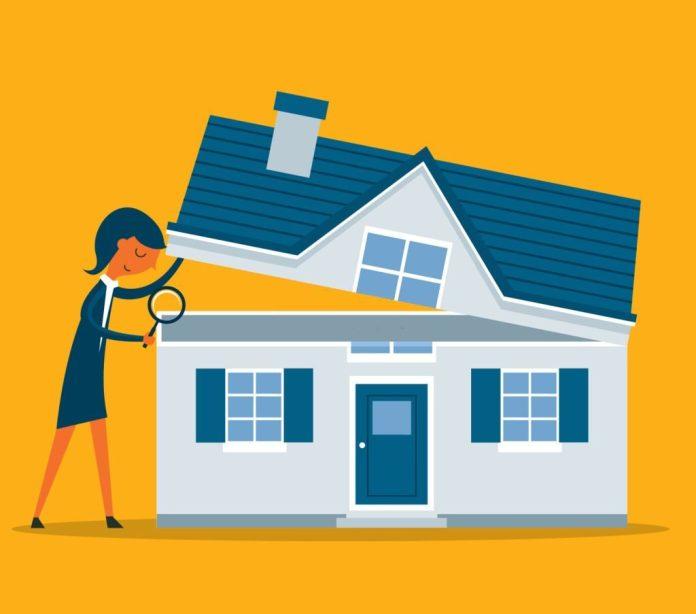When purchasing a home in the St. Louis area, radon testing is an important consideration during the home inspection process. This is because St. Louis sits in a zone with potentially high indoor radon levels. Exposure to elevated radon increases one’s risk of lung cancer. Understanding what radon is, why it’s prevalent in St. Louis, and how testing works ensures you make informed decisions about your home purchase.
What is Radon?
Radon is a radioactive gas that forms naturally from the decay of uranium in soil, rock, and water. It enters homes through cracks and openings in the foundation. Once inside, radon can accumulate to unsafe levels. Radon is invisible, odorless, and tasteless, so the only way to detect it is through specialized testing. Prolonged radon exposure is considered the second leading cause of lung cancer after smoking. This makes testing critical during home inspections.
Why St. Louis Has Elevated Radon Levels
Certain geological characteristics put the St. Louis area at increased risk for indoor radon. Parts of St. Louis and surrounding counties contain rocky glacial till soil with higher uranium content. Cavernous limestone bedrock also lies beneath much of the region. Cracks and gaps in the limestone allow radon to rise from the soil and enter homes through foundation openings.
According to the U.S. Environmental Protection Agency, nearly 50% of homes in Zone 1 counties like St. Charles County could have radon above the recommended exposure limit. St. Louis City, St. Louis County, Jefferson County, and Franklin County are also in Zone 1. This makes radon testing a key part of home inspections in the region.
Radon Testing Options
Two main options exist for checking radon levels in a home:
Short-Term Testing
This fast method tests radon levels over 2-90 days using a small device placed in the lowest livable area of the home. Short-term tests give a useful snapshot of radon concentrations. They are convenient for real estate transactions when decisions need to be made quickly. One downside is short-term results can fluctuate if testing conditions vary.
Long-Term Testing
Long-term testing is done over 3-12 months to understand radon levels over time. A small monitor stays in place in the home during normal occupancy. Long-term testing offers a more complete picture, especially if radon reduction measures have been put in place. However, long-term testing takes more time which may not align with real estate timelines.
When elevated levels are detected, a mitigation system can be installed to reduce radon. Re-testing should then be done to confirm radon has been lowered to safe levels by the mitigation system.
Professional Radon Inspection Process
During a real estate transaction, a certified radon inspector or home inspector trained in radon testing should check radon levels in the home. Here is the typical testing process they will follow:
- Place a small radon test device in the lowest livable area of the home (usually the basement).
- Ensure doors and windows are closed 12 hours before testing to prevent dilution from outside air.
- Leave the passive radon testing device undisturbed in the home for the testing duration per manufacturer guidelines.
- Retrieve the device after the testing period and send it to a qualified radon lab for analysis.
- The lab will issue a report detailing the test results and average radon concentration.
Radon is measured in picocuries per liter (pCi/L). The EPA recommends radon mitigation for levels at or above 4 pCi/L.
Questions to Ask About Radon
During home inspection St. Louis and radon testing, below are key questions for buyers to ask:
- What type of radon testing do you recommend for this property?
- Have radon mitigation measures been installed previously? Were post-mitigation tests done?
- Where will you place the radon test device?
- What lab will analyze the results? How long is the testing duration?
- When can I expect to receive the radon test report?
- What options do I have if radon levels are elevated?
Ensuring your St. Louis area home doesn’t have dangerous radon accumulation requires expertise. Work with qualified radon inspectors and labs to test radon levels properly during the home inspection process.
Interpreting Radon Test Results
Once radon testing is complete, the lab will issue a report detailing the average radon level measured in your home. The EPA has set 4 pCi/L as the recommended maximum exposure limit before taking action to reduce radon.
If your radon test comes back at or above 4 pCi/L, mitigation measures are recommended. Various effective radon reduction systems can be installed to improve indoor air quality.
If your home tests below 4 pCi/L, radon may still be present but at relatively safe levels. Retesting every few years is wise to ensure radon levels haven’t increased. Make sure any future structural changes like renovations don’t raise radon concentrations.
Selecting a Radon Mitigation Professional
If your home requires radon reduction measures, choose an experienced radon mitigation contractor. Look for:
- Certified by the National Radon Proficiency Program (NRPP) or National Radon Safety Board (NRSB)
- Uses active soil depressurization – the most effective method
- Insured and licensed as applicable in your area
- Provides warranty on parts and labor
- Offers post-mitigation retesting to confirm radon reduction
Get multiple bids and check references to select the best radon contractor for your needs.
Take radon seriously during St. Louis home inspections to protect your family’s health in a new home. Partner with qualified radon testing and mitigation pros to fully understand this critical inspection item.
